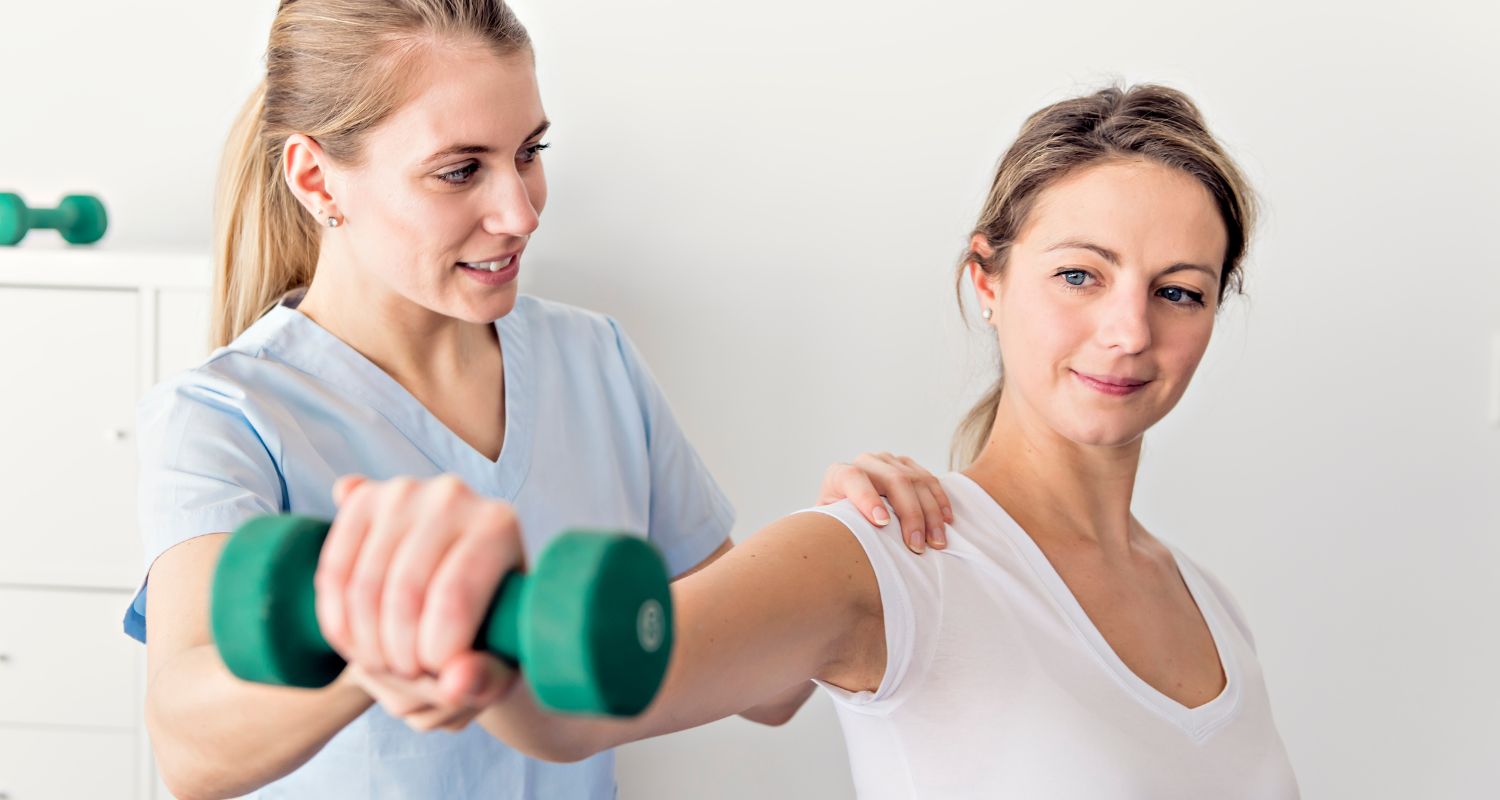Table of Contents:
The Shoulder’s Primary Function
The shoulder’s primary role is to supply and facilitate mobility of the upper limb. However, the arm’s sole structural link to the body is also significantly responsible for the upper limb’s strength and stability.
Due to the mobility afforded by the shoulder, it is also perhaps the least stable joint in the body, with a relatively little bone-on-bone contact surface, the labrum, and multiple ligaments preventing excessive movement. Muscles consequently contribute to the joint’s strength while also supplying mobility.
Due to the limited support provided by muscles and other tissues, the shoulder is a frequent site of injury in sports and when working. It is also susceptible to degenerative changes or injuries as we age. The rotator cuff muscles‘ tendons wrap around the joint and form their own ‘capsule,’ which adds stability and helps avoid damage.
Physiotherapy Treats Common Shoulder Injuries
- Bone Fractures
Most bone injuries are fractured; although many people claim that fractures and breaks are distinct entities, they are synonymous. Fractures may occur due to force transmission via the upper limb, as in a vehicle accident or while falling onto an extended limb, or as a result of direct damage to the bone, as in contact sports.
- Clavicle
The clavicle is a long, flat bone often referred to as the collar bone. It connects the scapula’s edge to the sternum and is a component of the acromioclavicular and sternoclavicular joints.
It is essential to visit physiotherapy for examination and treatment after a clavicle fracture. A variety of continuing difficulties may exist due to the conservative treatment of most fractures, or the alterations to your body structure may result in changes to how your muscles operate or feel.
- Scapula
Our scapula is the connective tissue that connects our body to our upper limb. The scapula, more often referred to as the shoulder blade, is an attachment for many of our back muscles and impacts arm mobility by altering the position of the glenohumeral joint. Scapula fractures are less frequent than humerus or clavicle fractures due to the scapula’s protective location and resistance to impact.
As with clavicle fractures, rehabilitation is critical for a full recovery from a scapular fracture. As a movement center, immobility or distortion of the scapula will alter the way muscles perform and their strength and increase tightness. Physiotherapists can assist in ensuring proper muscle activity and design a re-loading program to bring you back to life as quickly as possible.
- Humerus
The humerus is the upper arm bone, extending from the shoulder to the elbow. The humerus is the upper arm bone, extending from the shoulder to the elbow. The humerus, particularly the proximal head, is the location of several muscle attachments connecting to our shoulder at the glenohumeral joint. A fracture of the humeral neck is often referred to as a fractured shoulder.
Shoulder physiotherapy treatment is critical to ensuring a successful recovery from a humeral fracture. Due to the frequent presence of numerous fractures, muscular activity might result in distortion or aberrant bone healing. Additionally, since the limb will be immobilized for an extended time, it will be critical to see a physiotherapist about a reloading program to ensure that muscular strength and size are returned and that muscles engage appropriately to ensure proper mobility.
- Rotator Cuff Injuries
 The rotator cuff is a set of muscles that stabilize the shoulder. When the shoulder moves, the rotator cuff muscles compress the shoulder joint. The rotator cuff comprises four muscles: supraspinatus, infraspinatus, subscapularis, and teres minor.
The rotator cuff is a set of muscles that stabilize the shoulder. When the shoulder moves, the rotator cuff muscles compress the shoulder joint. The rotator cuff comprises four muscles: supraspinatus, infraspinatus, subscapularis, and teres minor.
Physiotherapy will be vital in reducing pain and boosting function. Attending physiotherapy will help your practitioner assess the degree of your injury and prescribe a progressive reloading program to strengthen the joint and restore the full range of motion.
- Ligament Injuries
Shoulder ligament problems are prevalent. Fall-related, repeated strain or contact sports injuries may severely impair function, mobility, and stability.
The acromioclavicular (AC) joints are the most often damaged. The ‘point’ of the shoulder is readily recognizable by its small protrusion at the outside of the shoulder.
If you have been diagnosed with or suspect an AC joint injury, you should see your physiotherapist. Less severe AC tears are frequently treated conservatively with moderate loading, joint stabilization and strengthening exercises prescribed by your physiotherapist to promote full recovery and prompt return to duty.
Conclusion
Seeing a physio will allow for optimal exercise prescription and load adaptation to your injury, ensuring a speedy and full recovery. A physiotherapist can provide activities that can help reduce the chance of re-injury and other difficulties.
Our physiotherapists will design a program to help you heal from existing injuries and prevent future ones. Strengthening the rotator cuff is vital for teenage and young athletes.
If you are currently suffering from a shoulder injury or suspect that the risks are increasing, please call us immediately at (778) 278-4755 or book an online appointment with one of our experienced physiotherapists.
< Previous | Home | Next >



Recent Comments